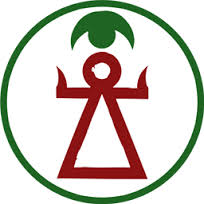Carthage (TWR2 Faction)
| Carthage (TWR2 Faction) | |
|---|---|
 | |
| Name: | Carthage |
| From Game: | Total War: Rome II |
| Religion: | Punic |
| Culture: | Hellenistic/Punic |
| Playable: | |
Carthage is one of the 14 major factions that are playable in Total War: Rome II campaign.
Overview
Carthage was a city that was founded by Dido on 813 BCE on the northern tip of Africa, overseeing Sicily. In later years, it would expand across the coast of North Africa, including some land in the mediterranean, due to its power control on the sea. Their main force consisted of their naval power and mercenaries they hired in times of war.
Carthage was an economical empire due to its power over the mediterranean sea, trading with many cities. In 280 BCE, they supported the Romans against Pyrrhus of Epirus. Unfortunately, this did not lead to a strong relationship. Rome and Carthage despise each other, not because of personal taste, but because Carthage is too close to Rome and poses as a threat. War is imminent among the two, so it's best for Carthage to prepare as Syracuse is likely to aid the Romans in gaining the province of Lilybaeum located in Sicily. Rome is not the only threat that Carthage has, as to the west in Hispaniola, many tribes are not so fond of the Carthaginians staying in their land.
Carthage has the potential to become an economical empire. Unfortunately, Carthage is spread thin in territory and defending two borders will not be an easy task to achieve, so it's best to plan ahead.
Starting Positions
Carthage beings with 5 controlled provinces located on the coast of North Africa, while others in Hispaniola. Carthage has immense access to the sea, and can aid armies with naval support. Allowing for strategical attacks on provinces that are near the coast. Carthage, the capital, is the center of its naval power, and it's flexibility as it is located in the center of the Carthaginian empire. Carthage may lack flexibility on land, but in sea they are able to outmanouver their opponents.
Tensions between Carthage and Rome are strong, and a war can erupt at any moment. Syracuse might aid Rome in its struggle to destroy Carthage, so the player could reinforce Lilybaeum or focus manpower somewhere else.
Family Dynasties
Depending on which dynasty chosen, Carthage will gain certain traits for the duration of the campaign.
Barcid Dynasty:
Named after the legendary Hamilcar Barca who opposed Rome.
- Pioneers: +15% movement range for all armies and fleets.

- Loyal troops: +15% morale for all mercenary units.
Hannonid Dynasty
Created by Hanno the Great. Was an age when the Hannonian dynasty ruled Carthage for 50 years during the 200s BCE.
Magonid Dynasty
The Magonids were responsible for Carthaginians expansion accross Lybia, Sardinian and Sicily.
- Iron Fist: +50% resistance to foreign occupation
- Phoenician Prowess: +3 experience ranks for ship recruits
Basic Start
Initial Turn
- Defensive Allies - None
- Military Allies - None
- Client States - Libya, Nova Carthago
- Trade Agreements - Nova Carthago
- War Against - Turdetani
- Prosperity - Moderate
- Influence - Overlooked
- Treasury - 4000
- Food - 5
- Technology - None
- Spies - Jezbel (Lilybaeum)
- Champions - None
- Dignitary - None
Controlled Cities
Carthage, Africa
- Starting Buildings - City, Public Forum, Shipwright
- Income - 1359
- Culture Diversity - 95% Punic, 5% Desert Nomadic
- Maximum number of buildings - 6
Lilybaeum, Magna Graecia
- Starting Buildings - City, Port
- Income - 77
- Culture Diversity - 20% Punic, 50% Latin, 30% Hellenic
- Maximum number of buildings - 4
Ibossim, Cartaginesis
- Starting Buildings - Village, Fishing Port
- Income - 490
- Culture Diversity - 28.8% Punic, 67.4% Iberian, 3.8% Celtic
- Maximum number of buildings - 4
Qart Hadast, Cartaginesis
- Starting Buildings - City, Harbour
- Income - 490
- Culture Diversity - 28.8% Punic, 67.4% Iberian, 3.8% Celtic
- Maximum number of buildings - 6
Victory Conditions
Military Victory
Control 50 port settlements by direct ownership or via client states and military allies, Have Control over the following 6 provinces: Africa, Italia, Syria, Tarraconesis, Bosporus, Aegyptus
Maintain 60 naval units, 40 mercenary units while having a total of 160 units.
Economic Victory
Control 36 port settlements either by direct ownership or through client states and military allies
Completely control the following 6 provinces by direct ownership, client states or military allies:
- Africa
- Arabia Felix
- Celtica
- Provincia
- Cilicia
- Caucasia
Maintain trade relations with 25 factions Hold at least one of every strategic resource At the end of your turn have an income of at least 90000 talents Research at least 20 of the civil technologies
Cultural Victory
Completely control the following 6 provinces by ownership, client states, or miitary states:
- Africa
- Hellas
- Oersis
- Illyria
- Italia
- Aquitania
Hold at least one settlement in 35 provinces in which your cultures is dominant Maintain trade relations with 10 factions.
Construct the following building;
- tophet
Research 30 of all technologies
Units
Generals
Melee Infantry
- Mercenary Gallic Warriors
- Mercenary Iberian Swordsmen
- Mercenary Italian Swordsmen
- Mercenary Scutarii
- Libyan Infantry
- Mercenary Samnite Warriors (Hannibal at the Gates DLC)
- Mercenary Noble Fighters
Spear Infantry
Pike Infantry
Missile Infantry
Shock Cavalry
Melee Cavalry
- Mercenary Celtic Light Horse
- Mercenary Iberian Cavalry
- Carthaginian Cavalry
- Mercenary Scutarii Cavalry
- Mercenary Campanian Cavalry (Hannibal at the Gates DLC)
Missile Cavalry
Elephants
Field Artillery
Fixed Artillery
Faction Details
Carthage's territories are difficult to defend because they're spread out. Carthage may be under attack from Rome, Syracuse, Iberian tribes and desert kingdoms. But Carthage has resources, including two client states at the start and the ability to recruit cheaper mercenaries as your society develop. There are also more subtle advantages, such as your ability to make new client states and levy troops from them as well as your ability to march your armies through deserts in any season without attrition.

